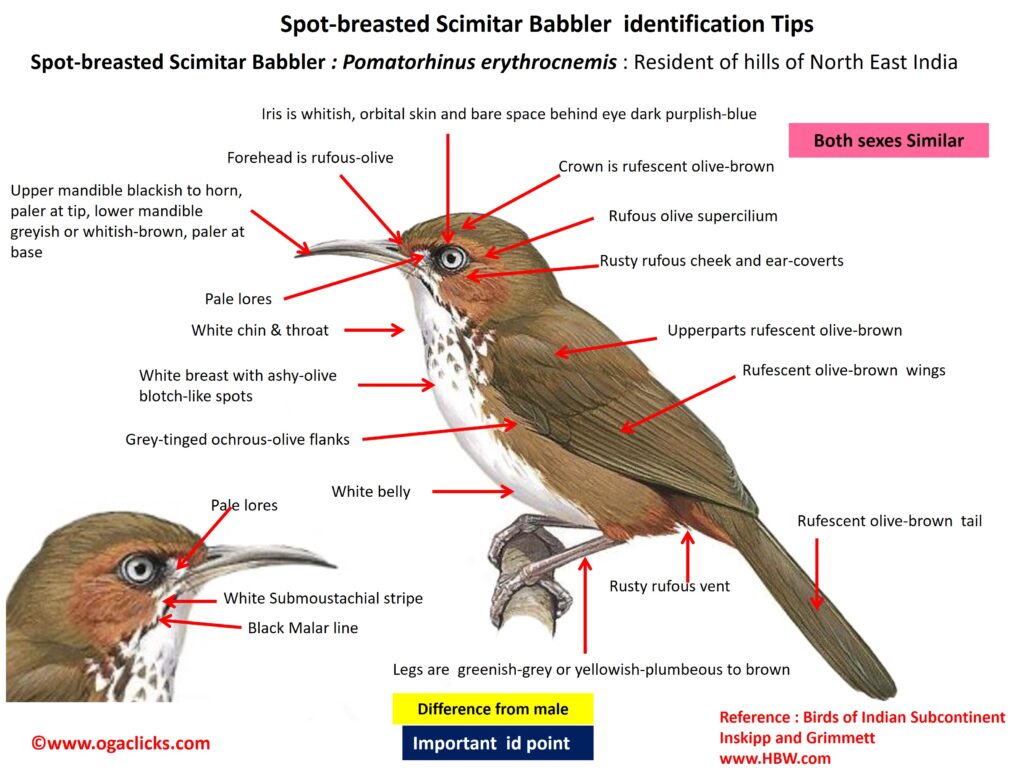
Spot-breasted Scimitar-babbler/ Black-necklaced Scimitar-babbler Pomatorhinus Mcclellandi
Etymology:
- Pomatorhinus : Greek Word pomatos – lid, cover; rhinos- nostrils. {Lid covered nostrils}
- Mcclellandi / Mcclellandii : John MacClelland (1805-1875) British zoologist, geologist
Distribution in India: Resident of North East India.
Description: Size of 23–25 cm. It has forehead to anterior supercilium as chestnut, crown is greyish-tinged brown with vague pale edges creating slight streaked effect. It has rufous-brown nape , mantle and rufous-chestnut scapulars, upperwing-coverts, wing fringes, back and rump, with rufous-brown tail. The lores are whitish, ear-coverts are rich rufous basally and shading to dull grey-brown distally, combined submoustachial and malar stripes are black. The chin to breast is white, breast with thick necklace of evenly distributed broad black streaks, central lower underparts are white, flanks are greyish-rufous, thighs are greyish and rufous-chestnut, vent is rufous-chestnut. The iris is brownish-ivory, bill is variable, light horn with dark grey admixed to brownish black; legs are pale brown to grey- brown. Both the sexes are similar.
Habitat: It is found in upper undergrowth and lower tree strata of foothill, submontane and montane forest. It is found from lowland up to 2500 m.
Food habits: It eats Insects and larvae. It forages mainly on ground, with vigorous scratching movements.
Breeding habits: They breed in Mar. they lay a clutch of 4 eggs.